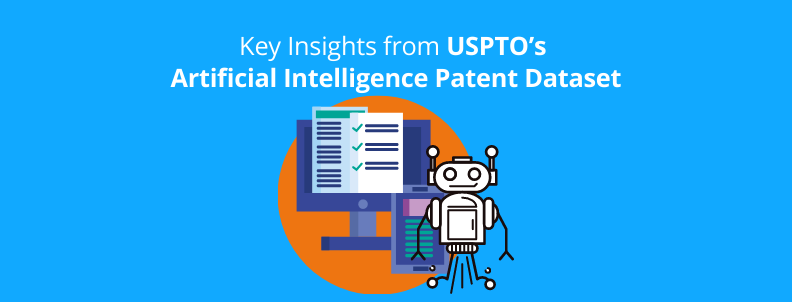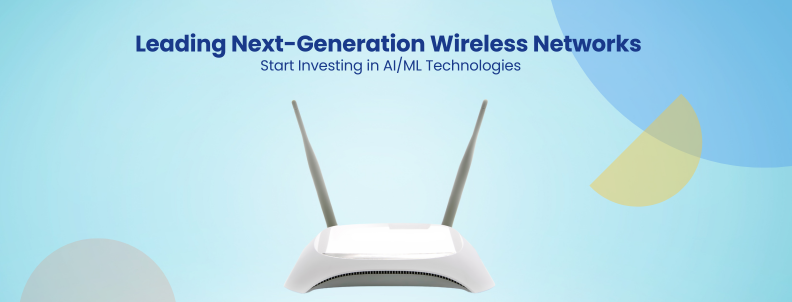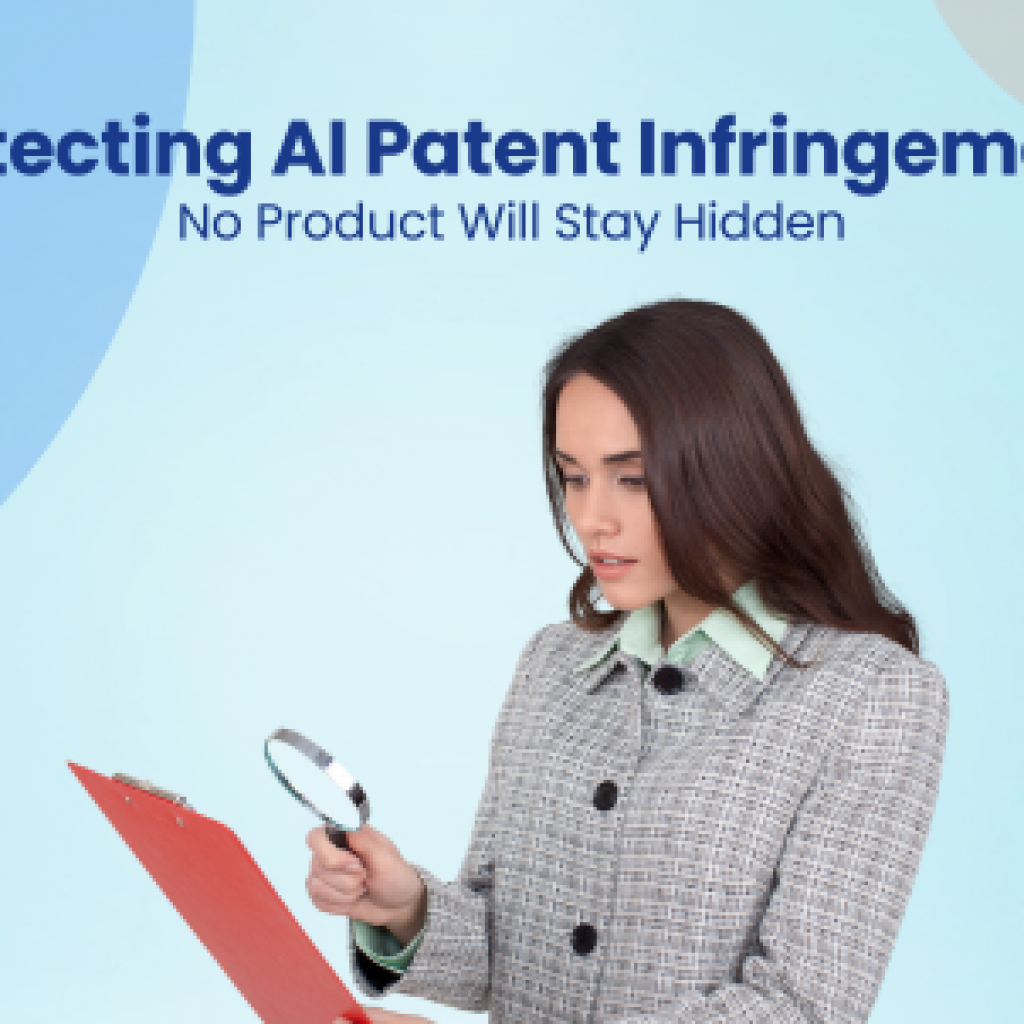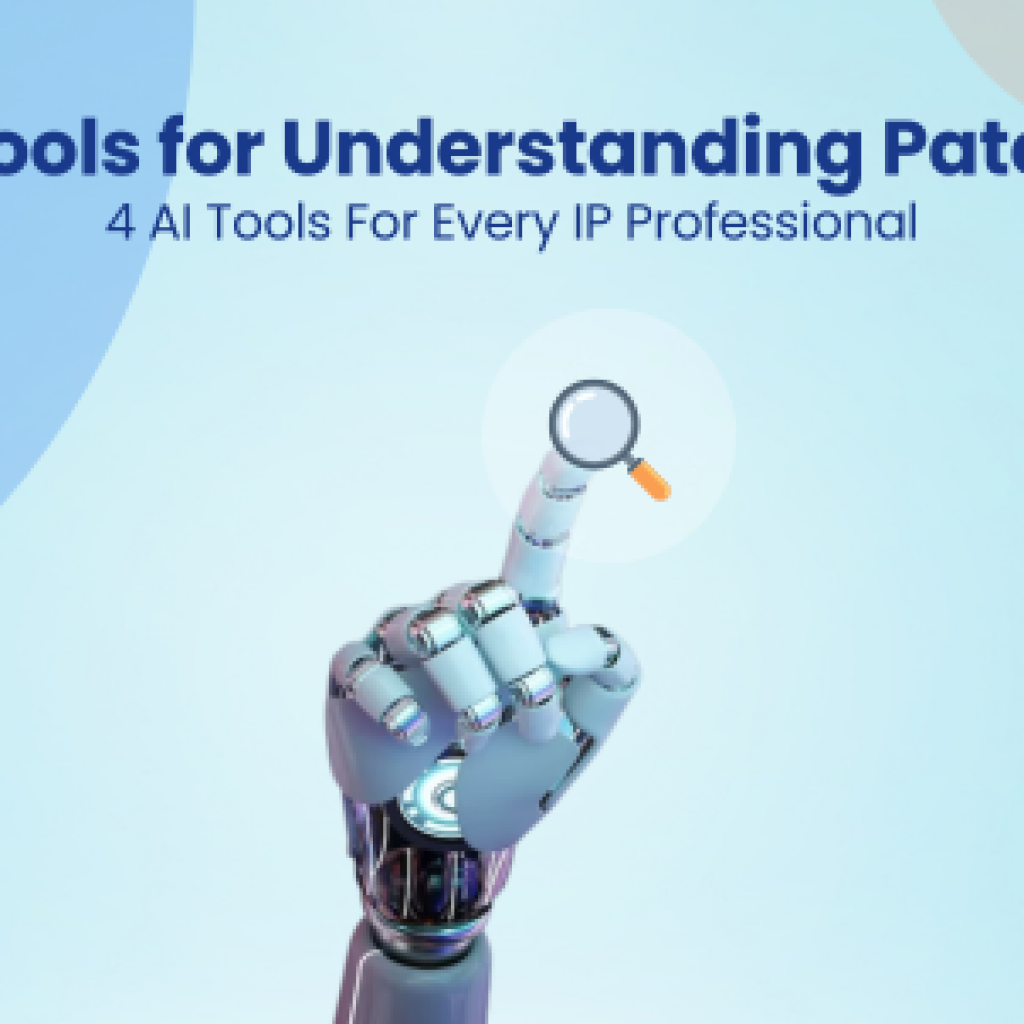Artificial Intelligence (AI) has been disrupting many industries for the past decade. With the rise of data and powerful hardware, AI has changed the world to a great extent and the peak is yet to come.
As I sit here typing this article on Google docs, Google suggests auto-completion of my sentences with the help of AI algorithms. That’s just one of the many scenarios where companies are using AI to make things easier or do them differently. What a fascinating world we all are living in!
If I were to give an instance of how AI is disrupting everyday life, let’s take the help of the recently held Tokyo Olympics and see how the power of AI was harnessed to make the event a cakewalk for both the organizers and participants.
How the power of AI was harnessed in Tokyo Olympics?
Below listed are some ways in which companies have used AI in the Olympic games.
- Bringing humanoid robots in a bid to reduce the number of human volunteers in the light of the COVID-19 pandemic.
- 3D Athlete Tracking (3DAT) (collaboration by Intel and Alibaba) utilizes AI and computer vision to show real-time data during games. The technology creates a 3D mesh that allows analysis of real-time and biomechanical data for athletes and coaches, as well as gives insights to fans on how athletes perform.
- Athletes from across the globe implemented cutting-edge technology to train and maximize their chance of winning at the games. A large amount of data is recorded and analyzed by AI systems, insights are then sent to coaches who can take rapid action for tactics and strategy adjustments.
- CUE – the basketball-playing robot never misses a free throw.
- Sports like swimming, gymnastics, and beach volleyball used Omega’s timekeeper which incorporates computer vision and motion sensors allowing players to track their movements in real-time and analyze them directly into the competition.
There’s this and so many other instances. Simply put, if you are not using AI to make your life efficient and perform better, you are really missing out on something. Reading into it, it makes one wonder about the origins of AI.
A bit of reading on the internet tells us that in the 1940s and 50s, a handful of scientists from a variety of fields (mathematics, psychology, engineering, economics, and political science) began to put their heads together on the possibility of creating an artificial brain.
70 years is a really long time. We have witnessed technologies that were conceived and became extinct in much shorter timelines and AI, in the meanwhile, has been widely adopted and disrupted other industries as well. It makes one question: Why it took so much time?
There were also other questions like – Which companies were ahead of their time in starting research on AI? Who are some of the major players in this tech? Where is this tech headed?
We were also curious to find answers to all these questions. One thing I have learned over the years working in the domain of knowledge management is you can almost always find answers in patents if you’re looking to understand the technological evolution of any technology. So that’s what we did.
When USPTO released the Artificial Intelligence dataset recently, we knew we can’t give up on the opportunity. Analyzing the data got us some answers and some really cool insights in the process. But before we get to that, let’s talk about the dataset a bit.
What does USPTO’s AI dataset tell us?
Recently, the USPTO has provided very useful and powerful patent datasets and so is the latest offering by USPTO – The Artificial Intelligence Patent Dataset (AIPD). They have analyzed 13.5 million US patents using Machine learning algorithms to identify the patents which include Artificial Intelligence (AI) technology in them. USPTO also released a working paper describing the dataset.
AI is a very broad category and can contain a lot of sub-technologies. USPTO divided the AI technology into 8 key sub-technologies or components:
- Knowledge processing
- Represent facts about the world and derive new facts from a knowledge base
- Speech
- Methods to understand the sequence of words given an acoustic signal
- Google’s Speech-to-text
- AI hardware
- Hardware designed to implement AI software
- Google’s Tensor Processing Unit (TPU)
- Evolutionary computation
- Computational methods utilizing aspects of nature like evolution
- Genetic algorithms
- Natural language processing (NLP)
- Understanding and using human language
- Autocorrect and Autocomplete software
- Machine learning (ML)
- Learning from data, identifying patterns, and making decisions
- Neural networks, Fuzzy logic, probabilistic networks, regression
- Computer Vision
- Extract and understand information from visual input like images, videos
- Object recognition, Edge detection
- Planning/Control
- Identify and execute plans to achieve specific goals
- Data systems for administration/management (e.g., managing an organization and its employees, including inventory, workflow, forecasting, and time management), adaptive control systems, and models or simulations of systems.
With access to the data, the analysts in our brain got to work. These were some of the insights we found in this huge pile of data.
How does the Patent Publication Trends in AI look like?
The below chart depicts the publication trend of AI patents from the year 2000, i.e., how many AI patents were published each year, w.r.t the above-listed technologies.
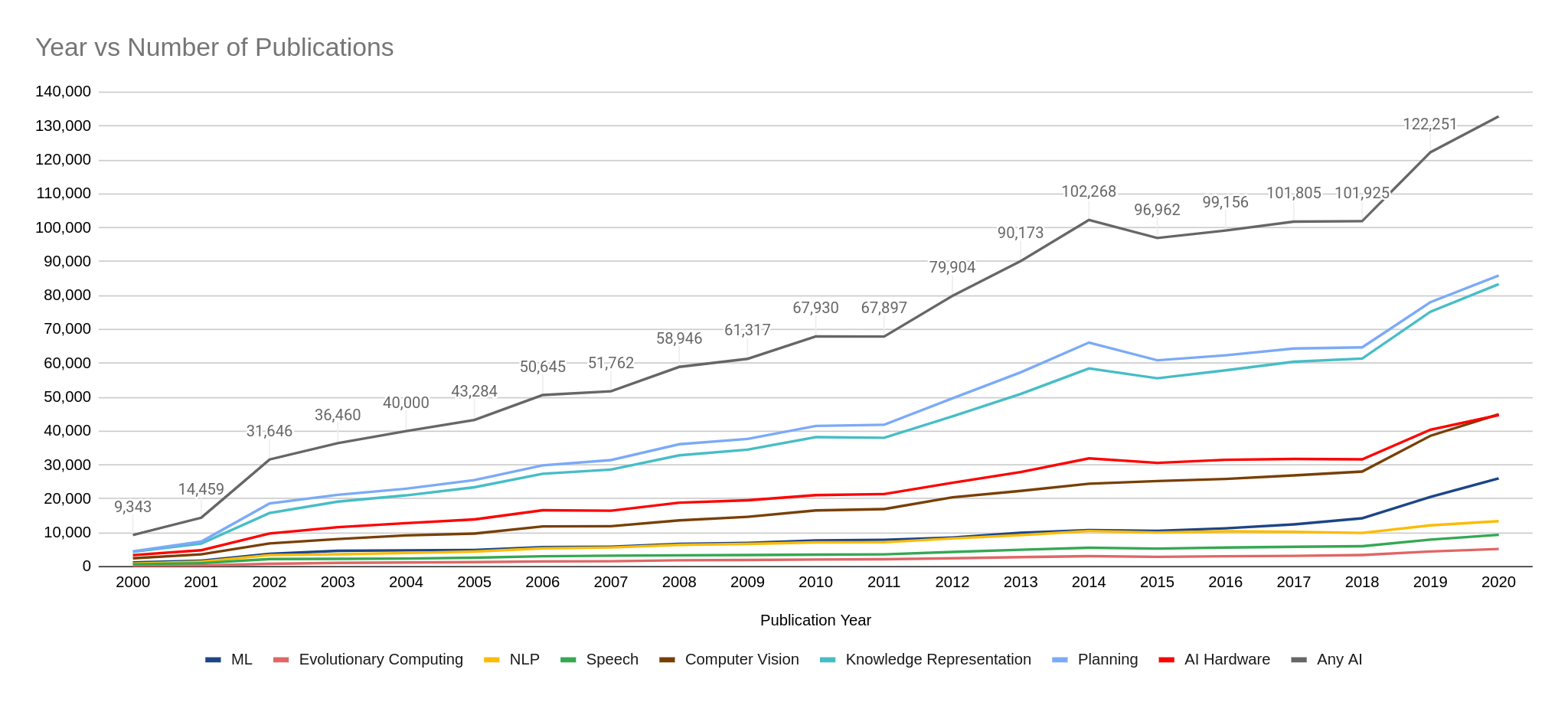
Let’s explore these trends in detail.
Key Insights from USPTO AIPD
A slight decline in the year 2011
We can see a slight decline in the number of filings in 2011 as compared to 2010. The reason could be Bilski v. Kappos (SCOTUS 2010).
In this case, the patent examiner rejected the application on the grounds that the invention is not implemented on a specific apparatus, merely manipulates an abstract idea, and solves a purely mathematical problem. The Board of Patent Appeals and Interferences agreed and affirmed. The Federal Circuit, in turn, affirmed.
The Supreme Court of the United States held that the machine-or-transformation test is not the sole test for determining the patent eligibility of a process, but rather “a useful and important clue, an investigative tool, for determining whether some claimed inventions are processes under § 101.”
While doing so, the Supreme Court affirmed the rejection of an application for a patent on a method of hedging losses in one segment of the energy industry by making investments in other segments of that industry, on the basis that the abstract investment strategy set forth in the application was not the patentable subject matter.
A lot of AI-related technologies involve mathematical problems and so this might be the reason behind the decline.
A Major Decline in the Year 2015
There was a 5.2% decline in the number of publications in 2015 as compared to 2014. Alice v CLS Bank is to blame here. On June 19, 2014, the U.S. Supreme Court reached a unanimous decision in Alice Corp. v. CLS Bank International that altered the law on patent subject matter eligibility. The court ruled that ‘implementing the abstract idea’ on a computer does not make it patentable.
In the aftermath, a lot of computer-related patents faced 101 rejections. We believe that AI-related patents also showed a decline because of this decision.
A Sharp Increase in the Year 2019
2019 showed a massive increase in AI patents with ~20% more publications than in 2018. The top recipients of these patents were IBM, Microsoft, Intel, Samsung, Google, Amazon, Apple, Facebook, Oracle, Canon, and SAP.
Since most AI-related innovations are enabled by data, the organizations that generate the most AI-related patents are often the ones that own the most data. AI technologies are used everywhere these days, be it smartphones, smartwatches, fitness trackers, autocompletion tools, etc. There is also a lot of room for improvement and we expect the trend to go up in coming years.
Which Companies have the Most AI Patents?
There’s no doubt that AI has taken over our lives in the 21st century and every other company is investing in AI these days. In our earlier article, we covered what the research trends in AI look like. In that article, we took you through the current major players in AI domain and their research activity.
But our question was Who lead the race when it all started? Time to get the answers.
Which companies started filing AI-related patents before 2000?
The following list shows the top 20 companies with the most AI-related publications during the period 1976 – 2000:
| S. No. | Company | Country | # Publications |
| 1 | IBM | US | 2744 |
| 2 | Hitachi | Japan | 1038 |
| 3 | Motorola Mobility | US | 697 |
| 4 | AT&T | US | 692 |
| 5 | HP | US | 658 |
| 6 | Microsoft | US | 556 |
| 7 | NEC Corp | Japan | 525 |
| 8 | Toshiba | Japan | 521 |
| 9 | Xerox | Japan | 512 |
| 10 | Fujitsu | Japan | 422 |
| 11 | Sun Microsystems | US | 414 |
| 12 | General Electric | US | 405 |
| 13 | Mitsubishi | Japan | 404 |
| 14 | Kodak | Japan | 393 |
| 15 | Apple | US | 383 |
| 16 | Panasonic | Japan | 383 |
| 17 | Siemens | Germany | 376 |
| 18 | Intel | US | 361 |
| 19 | Philips | Netherlands | 345 |
| 20 | Canon | Japan | 330 |
We can see that IBM topped the chart by a huge margin. It would be safe to say that ever since its beginning, IBM has been one of the top 5 players of the AI technology. In fact, talking of the top 5, we realized that only 3 out of the current top 5 players were amongst the early top 20 players. Which are the other two? Well, you got to read this article to find out.
Recommended Read: Top 10 high value AI patents you should know about if you’re looking to acquire or license AI patents.
One can see that apart from US-based companies, the list is ruled by Japanese companies. Another thing that caught our eyes is companies like Kodak, Canon, Xerox, HP that provided imaging, photography, and printing solutions, in other words, the major producers of cameras, printers, photocopiers, etc. can be found in the above list. Interesting, huh? What were they up to?
This could lead to a ton of questions and patent data could help answer them. Do you need answers to such questions and more? We could dig through the data and help you get them. All you’ve got to do is send us a message and we can get talking.

Data Sources
- USPTO – The Artificial Intelligence Patent Dataset (AIPD)
- Patent Examination Data System (PEDS)
- Assignee names cleaned by GreyB’s proprietary tool
We bring fresh technology insights powered by patent analytics right to your inbox. If you want to keep up-to-date on what interesting things are taking place with all the latest trending technologies.

Authored by: Gaurav Neema, Product Development Team.

